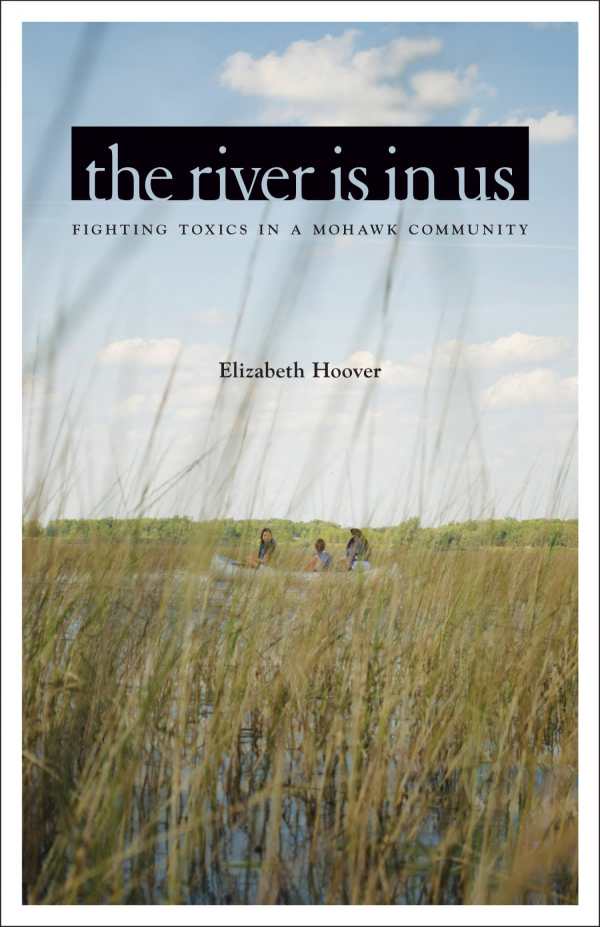The River Is in Us
Fighting Toxics in a Mohawk Community
The River is in Us is rewarding reading for anyone interested in environmental justice or indigenous people.
Elizabeth Hoover’s scholarly yet approachable The River is in Us addresses the interconnection of native people with their land and wildlife, and describes the toxins infiltrating Mohawk bodies from nearby industrial plants—pollutants which even contaminate mothers’ breast milk.
The Mohawk residents of Akwesasne—the lands straddling the St. Lawrence River in northern New York State and Canada—have been the focus of numerous, long-standing studies of individual and environmental health. Hoover’s ultimately uplifting book assesses how the Akwesasro:non won the fight to secure a more thorough cleanup of three adjacent Superfund sites, as well as some redress for cultural and environmental losses caused by the corporate pollution. It also documents the community’s work at the forefront of democratizing science, pushing scientists to adopt community-based methodologies in designing and implementing research projects.
Hoover’s book is a good primer on Mohawk history, spirituality, and culture, on contemporary public-health and food-culture issues, and on the politics and science of environmental restoration. Her work is not only rooted in an extensive review of extant literature and science but is anchored by her years of meetings with the Akwesasro:non and the many scientists who worked with them.
Each chapter begins with an anecdote or conversation with someone in the community, imparting the successive pages with the indigenous perception of how outside researchers, governments, and other players affect and conflict with them. Numerous photographs of the landscape, and of Mohawks fishing, gardening, and involved in traditional ceremonies, alongside Hoover’s masterful first chapter “driving tour” of Akwesasne, convey a palpable sense of place and community.
The book navigates much thorny material, from centuries of convoluted treaty litigation to intertribal and interjurisdictional disagreements about Mohawk self-governance, but Hoover patiently untangles each subject and makes the issues thoroughly understandable. The River is in Us is rewarding reading for anyone interested in environmental justice or indigenous people. It is heartening to learn how persistent activism brought about empowerment and positive change for one community.
Reviewed by
Rachel Jagareski
Disclosure: This article is not an endorsement, but a review. The publisher of this book provided free copies of the book to have their book reviewed by a professional reviewer. No fee was paid by the publisher for this review. Foreword Reviews only recommends books that we love. Foreword Magazine, Inc. is disclosing this in accordance with the Federal Trade Commission’s 16 CFR, Part 255.

